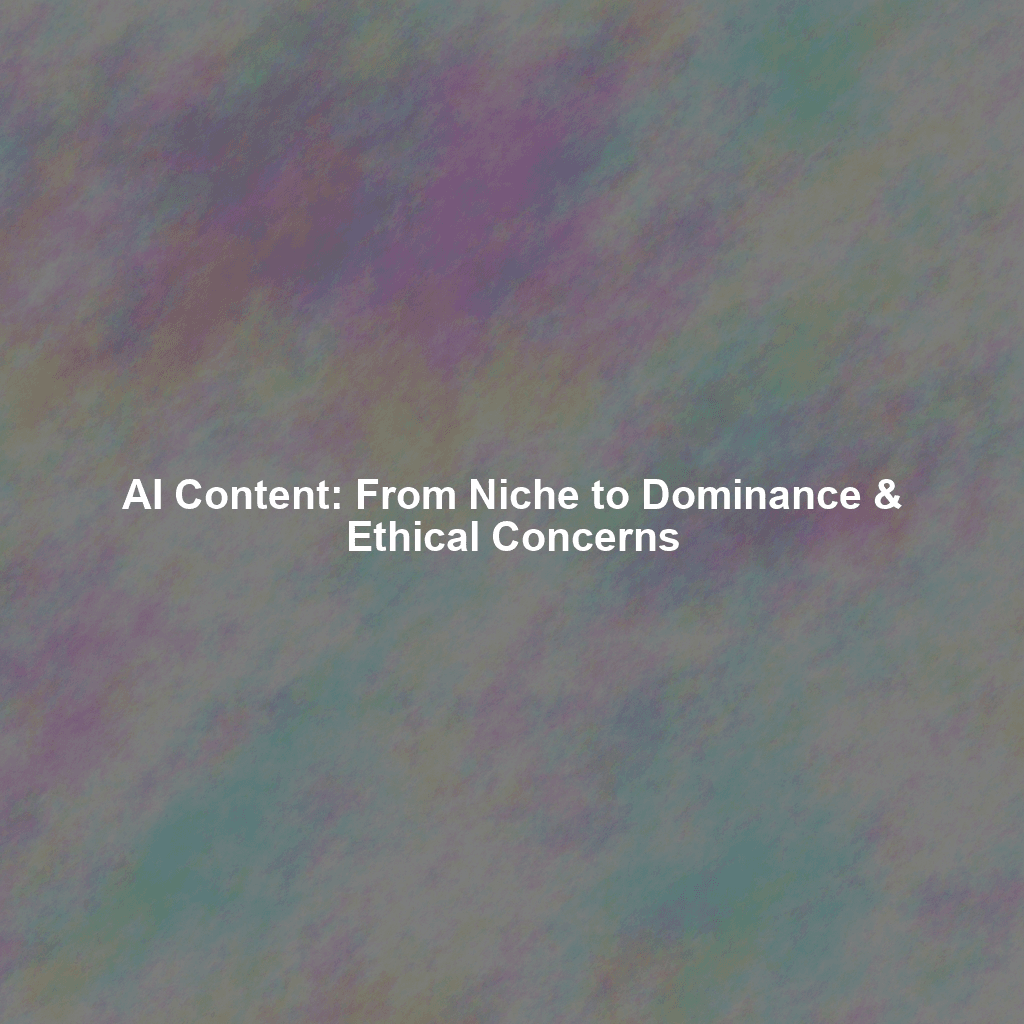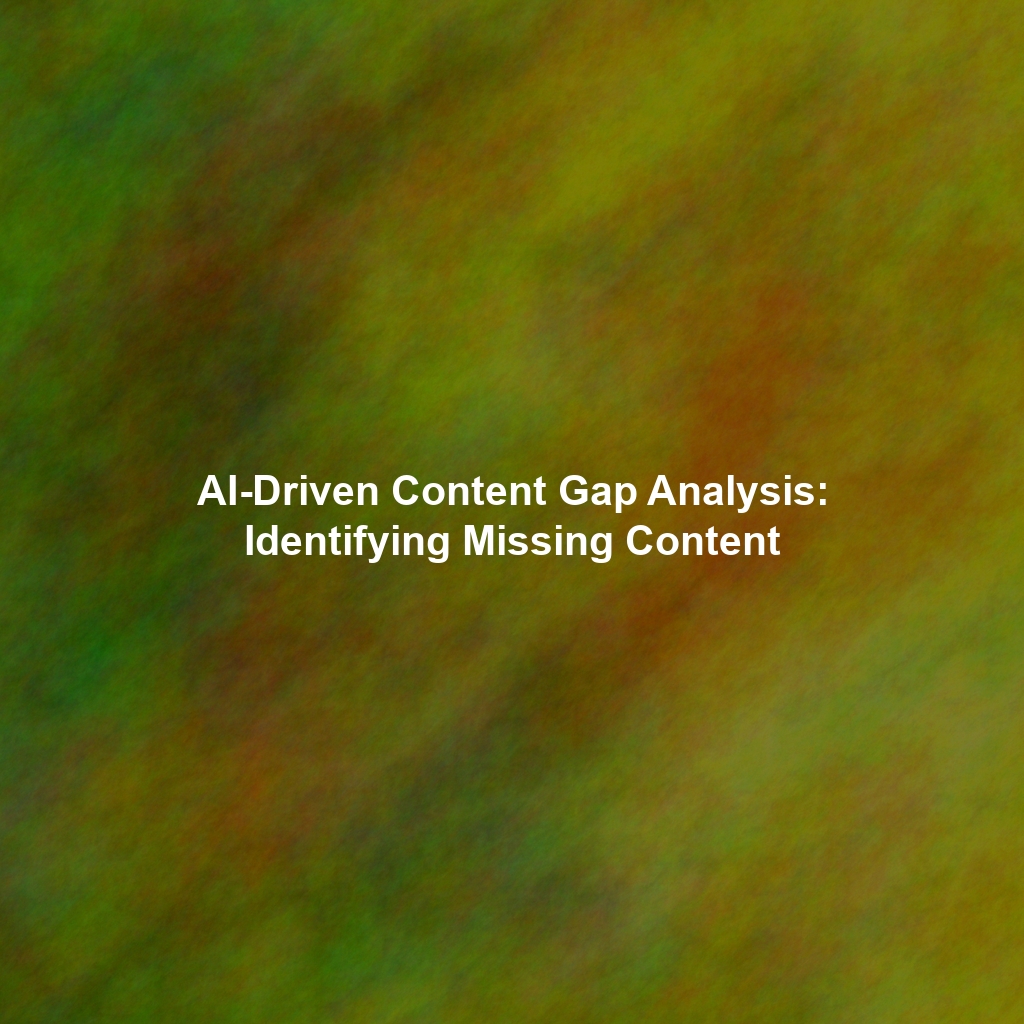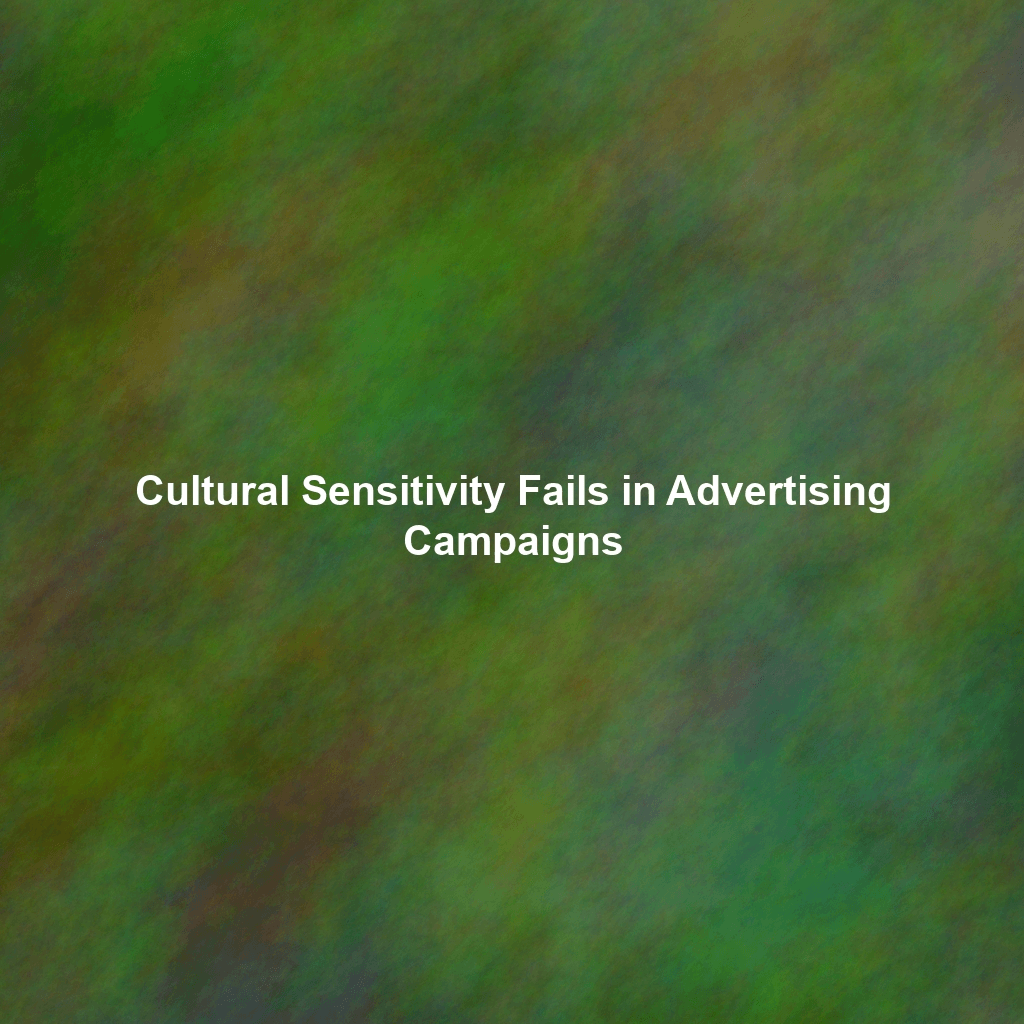Introduction: A Seismic Shift in Content Creation
The world of content marketing is constantly evolving, but few transformations have been as profound as the rise of Artificial Intelligence (AI). From rudimentary tools in 2020 to sophisticated platforms in 2023, AI’s role in content creation has expanded exponentially. This article will delve into the AI content landscape, contrasting its limited presence in 2020 with the predicted advancements for 2025. More importantly, we will critically examine the ethical challenges and offer a framework for responsible AI content creation.
AI in Content Creation: 2020 – A Nascent Stage
Back in 2020, AI’s involvement in content was primarily limited to a few key areas:
- Basic Grammar and Spell Checkers: Tools like Grammarly (founded in 2009) were already widely used, providing automated proofreading and suggestions. These were rule-based systems with limited understanding of context.
- Simple Content Spinning: Early AI-powered tools attempted to “spin” existing content by replacing words with synonyms. The results were often awkward and of low quality, hardly effective for SEO or audience engagement.
- Headline Generation: Some tools could suggest headlines based on keywords, but these were often generic and lacked creativity.
- Keyword Research: AI algorithms were used to analyze search data and identify relevant keywords for content optimization.
The limitations were stark. AI couldn’t understand nuance, lacked creative thinking, and produced content that rarely resonated with human readers. Content marketers largely relied on human writers and editors for high-quality, engaging content.
For example, consider a company needing to create blog posts about “sustainable living.” In 2020, they would rely almost exclusively on human writers to research, write, and edit these posts, ensuring accuracy, engaging storytelling, and a unique perspective. AI’s role would be limited to suggesting keywords and checking grammar.
The AI Content Revolution: The Landscape Today (2023)
The intervening years have witnessed a dramatic shift. AI content generators are now capable of producing a wider range of content, with increasing sophistication and quality. Key advancements include:
- Natural Language Generation (NLG): AI models like GPT-3 and its successors have revolutionized content creation. These models can generate coherent and engaging text on a wide range of topics, mimicking human writing styles.
- Automated Copywriting: AI can now write ad copy, product descriptions, email subject lines, and other marketing materials. Platforms like Jasper and Copy.ai have gained popularity, offering specialized tools for different copywriting needs.
- Personalized Content Creation: AI can analyze user data to create personalized content experiences. This includes tailored email marketing, customized website content, and personalized product recommendations. A report by McKinsey highlighted the significant impact of personalization on customer experience and revenue growth (McKinsey: Personalized Marketing).
- Content Repurposing: AI tools can automatically repurpose existing content into different formats, such as turning a blog post into a social media thread or a video script.
- Image and Video Generation: AI is also making strides in generating visual content. Tools like DALL-E 2 and Midjourney can create stunning images from text prompts, opening up new possibilities for visual storytelling.
However, the rise of AI-generated content is not without its challenges. Issues of accuracy, originality, and ethical considerations are becoming increasingly important.
Imagine that same company needing “sustainable living” blog posts. Today, they can use AI to generate initial drafts, create various headline options, and even suggest relevant images. This saves considerable time, freeing up human writers to focus on editing, fact-checking, and adding unique insights.
If you’re finding that content creation is taking up too much of your time and budget, exploring AI-assisted tools might be a worthwhile next step. Understanding your specific content needs will guide you in selecting the right AI solutions.
Predictions for 2025: The Future of AI in Content Marketing
Looking ahead to 2025, we can expect even more significant advancements in AI-generated content:
- Hyper-Personalization: AI will be able to create truly personalized content experiences, tailoring content to individual user preferences, behavior, and even emotional state.
- AI-Powered Storytelling: AI will be able to generate compelling narratives, crafting stories that resonate with audiences on an emotional level. This would require a deeper understanding of human psychology and storytelling techniques.
- Multilingual Content Creation: AI will be able to automatically translate and adapt content for different languages and cultures, enabling businesses to reach a global audience more effectively.
- Real-Time Content Optimization: AI will continuously analyze content performance and make real-time adjustments to optimize for engagement, conversions, and other key metrics.
- Integration with Emerging Technologies: AI will be integrated with other emerging technologies, such as augmented reality (AR) and virtual reality (VR), to create immersive content experiences.
A Gartner report suggests that AI will automate 30% of outbound marketing messages by 2025 (Gartner). While this doesn’t mean marketers will be out of jobs, it does signal a significant shift in the skills and responsibilities required.
Consider the possibilities for that “sustainable living” company: They could use AI to create personalized content experiences for each visitor to their website, recommending specific products or articles based on their interests and past behavior. AI could also help them create interactive AR experiences that showcase the benefits of sustainable living in a visually engaging way.
Ethical Challenges and Considerations
The increasing capabilities of AI-generated content bring with them a range of ethical challenges that must be addressed:
Plagiarism and Originality
One of the most pressing concerns is the risk of plagiarism. AI models are trained on vast datasets of existing content, and there is a risk that they may inadvertently generate content that infringes on copyright or plagiarizes existing works. It’s crucial to use plagiarism detection tools and human oversight to ensure originality.
Authenticity and Transparency
As AI-generated content becomes more sophisticated, it can be difficult to distinguish it from content created by humans. This raises questions about authenticity and transparency. Should AI-generated content be clearly labeled as such? How can we ensure that audiences are not misled?
Job Displacement
The automation of content creation tasks may lead to job displacement for writers, editors, and other content professionals. It’s important to consider the social and economic implications of AI and to invest in training and education programs to help workers adapt to the changing job market.
Bias and Fairness
AI models can perpetuate biases present in the data they are trained on. This can lead to the generation of content that is discriminatory or unfair. It’s important to carefully evaluate the data used to train AI models and to implement measures to mitigate bias.
Misinformation and Manipulation
AI can be used to generate highly realistic and convincing fake news or propaganda. This poses a serious threat to democracy and social stability. It’s crucial to develop tools and strategies to detect and combat AI-generated misinformation.
A Framework for Responsible AI Content Creation
To harness the power of AI in content creation while mitigating the ethical risks, we need a framework for responsible implementation. This framework should include the following principles:
Transparency
Be transparent about the use of AI in content creation. Clearly label AI-generated content where appropriate. This builds trust with your audience and avoids misleading them.
Human Oversight
Maintain human oversight throughout the content creation process. AI should be used as a tool to augment human creativity and productivity, not to replace it entirely. Human writers and editors should review and edit AI-generated content to ensure accuracy, originality, and quality.
Ethical Data Practices
Use ethical data practices when training AI models. Ensure that the data used is accurate, representative, and free from bias. Respect user privacy and comply with all applicable data protection regulations.
Bias Mitigation
Actively mitigate bias in AI models. Evaluate the data used to train AI models and implement measures to reduce bias. Regularly audit AI-generated content to identify and correct any instances of bias.
Fact-Checking and Accuracy
Prioritize fact-checking and accuracy. AI-generated content should be thoroughly fact-checked by human editors before publication. Implement measures to prevent the spread of misinformation.
Continuous Monitoring and Improvement
Continuously monitor and improve AI content creation processes. Track the performance of AI-generated content and make adjustments as needed. Stay up-to-date on the latest ethical guidelines and best practices.
For example, when generating initial drafts for the “sustainable living” blog posts, the company should always have a human expert review the AI-generated text to ensure accuracy of claims, avoid any potential for plagiarism (even unintentional), and ensure the content aligns with their brand voice and values.
If you’re interested in learning more about ethical AI implementation, consider researching frameworks like the one proposed by the Harvard’s Ethics in AI initiative. They offer valuable insights into developing responsible AI practices.
Conclusion: Embracing the Future Responsibly
AI is poised to revolutionize content marketing, offering unprecedented opportunities for efficiency, personalization, and creativity. However, it’s crucial to approach this technology with caution and responsibility. By embracing a framework that prioritizes transparency, human oversight, ethical data practices, and continuous monitoring, we can harness the power of AI while mitigating the risks. The future of content marketing is undoubtedly intertwined with AI, but it’s up to us to ensure that this future is ethical, sustainable, and beneficial for all.
This article was optimized and published by Content Hurricane.
 Skip to content
Skip to content

